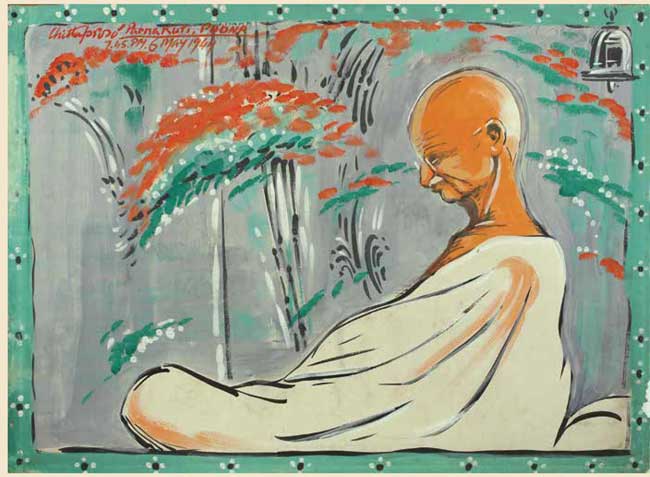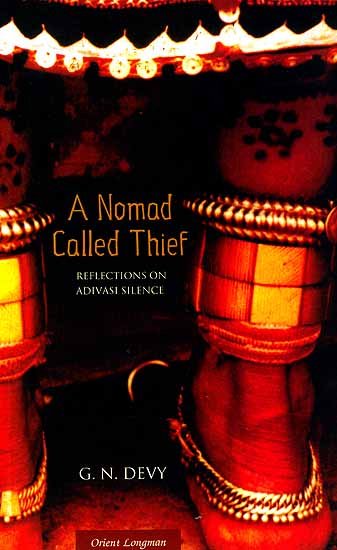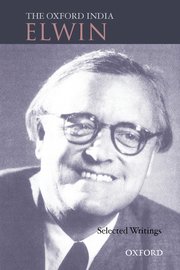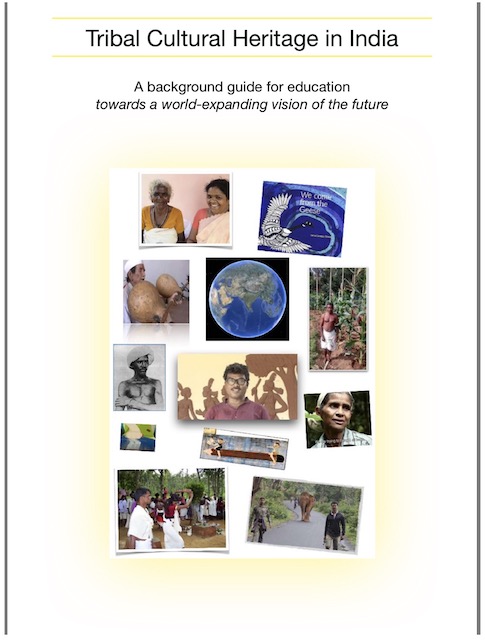Whatever our own cultural background, there are amazing discoveries to be made, for India’s youth just as for scholars and visitors from all over the world!
Note: toggle to normal view (from reader view) should the interactive map not be displayed by your tablet, smartphone or pc browser.
Learn more about – and from – some of India’s tribal communities by
- clicking on the button seen in the top left corner of the interactive map
- clicking on any marker in the map
- following the links seen there and below
“We shall first have to give up this hubris of considering tribes backward. Every tribe has a rich and living cultural tradition and we must respect them.” – Vice President M. Venkaiah Naidu on the constitutional obligation to respect the cultural traditions of India’s tribal communities

Gandhian social movement | Constitution | Adverse inclusion >>
“Air is free to all but if it is polluted it harms our health… Next comes water… From now on we must take up the effort to secure water. Councillors are servants of the people and we have a right to question them.” – Mohandas K. Gandhi, Ahmedabad address on 1 January 1918; quoted by his grandson, Gopalkrishna Gandhi, in “On another New Year’s Day: Mahatma Gandhi’s ‘khorak’ a 100 years ago” (The Hindu, 1 January 2018)
“The world has enough for everyone’s need but not for anyone’s greed.” – Mahatma Gandhi quoted by Medha Patkar and Baba Amte (Narmada Bachao Andolan)
Gondi-Harappan link (2500 B.C.–1750 BC)
Hampi – Karnataka
Possibly “a revolutionary find” that links the adivasi Gond tribe to the Indus Valley civilisation, which flourished between 2500 B.C. and 1750 BC. Eleven of the Hampi pictographs resemble those of the civilisation, according to Dr. K.M. Metry, Head and Dean, Social Sciences, Kannada University, Hampi; Dr. Motiravan Kangali, a linguist and expert in Gondi language and culture from Nagpur, Maharashtra; and his associate Prakash Salame, also an expert in Gondi.If the discovery stands the scrutiny of experts in the field, it would mean that the Gonds living in central and southern India could have migrated from the Indus Valley civilisation. | Learn more: https://indiantribalheritage.org/?p=20315 | Gond >>
Paleolithic cultures
Pallavaram – Tamil Nadu
The Kurumbars’ role in South India’s Paleolithic culture: Epigraphical records on Chennai’s ancient history – Tamil Nadu | Learn more: https://indiantribalheritage.org/?p=20540
Ancient
Hastinapur (Delhi) & Bihar
The forest was never far away from habitation. For instance, excavations of the settlements at Atranjikhera and Hastinapur, which are not too far from Delhi, have yielded evidence of a large variety of forest trees.” The Buddhist Canon states that aside from the village and its outskirts, the rest of the land is jungle.” Even as late as the seventh century A.D., the Chinese Buddhist monk Hsuan Tsang writes of forests close to Kausambi, as also of the extensively forested areas in the vicinity of Kapilavastu and Kusinagara in the terai and north Bihar.” Travelling from one town to another meant going through a forest. Therefore, when in exile, the forest was not a physically distant place, although distant in concept. | Learn more: https://indiantribalheritage.org/?p=5851
Moving on
Sind & Punjab
The nomadic Romany (gypsy) tribe: Credited with amazing contributions to the music and dance of many countries from antiquity to the present – Sind & Punjab | Learn more: https://indiantribalheritage.org/?p=20310 | Romany >>
Medieval
Telangana
Located on the uplands of Deccan plateau, Telangana is the link between the North and South of India. It is thus no surprise that the region on the whole came to be known for its Ganga-Jamuna Tehzeeb and the capital Hyderabad as a ‘miniature India!’ | Learn more: Banjara and Dokra: Tribal craftmanship in a state that exemplifies “India’s composite culture, pluralism and inclusiveness” – Telangana https://indiantribalheritage.org/?p=19272 | Banjara >>
Colonial

Reflections on Adivasi Silence and Voice by Ganesh [G.N.] Devy | Publications >>
In 1871, the British passed the ‘Criminal Tribes Act.’ It notified about 150 tribes around India as criminal, giving the police wide powers to arrest them and monitor their movements.
The effect of this law was simple: just being born into one of those 150 tribes made you a criminal. | Learn more: https://indiantribalheritage.org/?p=11460
Jharkhand
The Role of Adivasis in the Freedom Movement
Adivasi uprisings in the Jharkhand belt were quelled by the British through massive deployment of troops across the region. The Kherwar uprising and the Birsa Munda movement were the most important struggles in late-18th century against British rule and their local agents. […] In 1914, Jatra Oraon started the Tana Movement, which drew the participation of over 25,500 Adivasis. The Tana movement joined the [Gandhian] nation-wide Satyagraha Movement (the non-violent movement for independence) in 1920 and stopped the payment of land-taxes to the colonial Government. | Learn more: https://indiantribalheritage.org/?p=11066 | Colonial policies >>
Modern
Western Ghats – Maharashtra, Goa, Karnataka, Kerala & Tamil Nadu
Sacred groves foster a sense of togetherness and harmony: Protecting nature in and beyond India’s tribal communities | Learn more: https://indiantribalheritage.org/?p=20948
Indigenous Knowledge
The country can learn much from the beauty of Adivasi social practices, their culture of sharing and respect for all | Learn more: https://indiantribalheritage.org/?p=11066

“Is it eccentric to live in beautiful scenery in the hills among some of the most charming people in the country, even though they may be ignorant and poor?” – Verrier Elwin quoted by G.N. Devy in The Oxford India Elwin >>
Gandhi believed that giving more importance, value and relevance to practical skills, and applying traditional knowledge to solving day-to-day problems were essential for the development of rural India. | Learn more: https://indiantribalheritage.org/?p=12993
Fashion for all of India – and the world!
Gujarat
Toda, Naga, Rabari and Banjara costumes figure in internationally acclaimed collection royal and ancient costumes – Gujarat | Learn more: https://indiantribalheritage.org/?p=11654
The future

“We have to write our own stories, about our issues, from our own perspectives.” – Abhay Xaxa, a “Fiercely Unapologetic Adivasi Scholar-Activist” | Read more >>
We all need to learn from those success stories that truly reflect the aspirations of tribal communities: according the India Exclusion Report 2015 that “there continue to be significant populations that are consistently and often extremely deprived of access to public goods that are essential for a human life with dignity.”
This needs to change, obviously, in accordance with India’s constitutional and human rights obligations, namely to ensure that “the State shall not discriminate against any citizen“. | Learn more: https://indiantribalheritage.org/?p=22410 & https://indiantribalheritage.org/?p=20996 & https://indiantribalheritage.org/?p=29790
Air is free to all but if it is polluted it harms our health… Next comes water… From now on we must take up the effort to secure water. Councillors are servants of the people and we have a right to question them. – Mohandas K. Gandhi (Ahmedabad address on January 1, 1918), quoted by his grandson, Gopalkrishna Gandhi | Learn more: https://indiantribalheritage.org/?p=24087
Meghalaya
Khasi, Garo and Jaintia communities are “models for sustainability in the future”: Report and recommendations on ways to counter deforestation – Meghalaya | Learn more: https://indiantribalheritage.org/?p=14246
